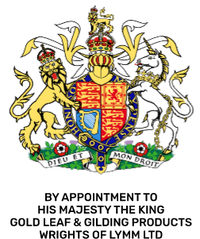Edible Gold Leaf Across the World - Portugal
- by sam@wrightsoflymm.co.uk User
A Golden Touch of Portuguese Luxury
Edible gold leaf has long been associated with luxury, opulence, and celebration. In Portugal, this shimmering delicacy—known locally as folha de ouro comestível—has deep historical roots and continues to dazzle in modern gastronomy. Whether used in 24 carat goldleaf form or as delicate gold flakes, this precious metal elevates food, drink, and even health products across the country.
A Brief History of Edible Gold Leaf in Portugal
The use of edible gold leaf in Portugal dates back to the Renaissance period, influenced by Italy and Spain. As Portuguese nobility expanded their influence and wealth through exploration and global trade, they adopted extravagant European customs—one of which was the application of goldleaf on food as a symbol of power and divine favour.
During the Age of Discoveries, Portuguese explorers brought exotic spices and precious goods to Europe. Alongside cinnamon, nutmeg, and saffron came the tradition of adorning celebratory dishes with 23 carat and 24 carat gold leaf, marking special events such as royal banquets and religious ceremonies.
While edible gold waned in popularity during periods of economic restraint, its recent revival in contemporary Portuguese cuisine has reignited fascination with this luminous ingredient.
Local Terms for Gold Leaf in Portugal
In Portugal, the following terms are commonly used to refer to edible precious metals:
-
Folha de ouro comestível – Edible gold leaf
-
Ouro de 24 quilates – 24 carat gold
-
Ouro de 23 quilates – 23 carat gold
-
Folha de prata comestível – Edible silver leaf
-
Pó de ouro – Gold dust
-
Pó de prata – Silver dust
-
Flocos de ouro – Gold flakes
-
Flocos de prata – Silver flakes
These terms are often seen in high-end pastry shops (pastelarias), gourmet restaurants, and luxury product packaging.
Culinary Uses of Goldleaf in Portugal
Portugal’s world-class gastronomy has embraced edible goldleaf in both traditional and modern contexts. Notable uses include:
1. Pastries and Confections
Portugal's beloved pastéis de nata (custard tarts) are occasionally topped with gold flakes during festive seasons. Confectioners also use silver leaf and gold dust to decorate almond-based sweets from the Algarve.
2. Fine Dining
Michelin-starred restaurants in Lisbon, Porto, and the Douro Valley have adopted 24 carat edible goldleaf to garnish gourmet dishes like foie gras, wagyu beef, and deconstructed seafood platters. This luxurious finish adds visual drama and exclusivity to the plate.
3. Beverages
Gold leaf has also made its way into Portuguese sparkling wines and cocktails. Trendy bars and wine cellars in Lisbon now offer drinks laced with gold flakes or silver dust, served in crystal glasses for an opulent experience.
4. Health and Beauty Supplements
Some holistic product makers in Portugal are incorporating gold dust and silver flakes into elixirs and wellness tonics, echoing ancient alchemical beliefs about the rejuvenating power of precious metals.
Is Edible Gold Safe?
Yes—23 carat and 24 carat gold leaf are biologically inert, meaning they pass through the digestive system without being absorbed. The same applies to silver leaf, provided it’s specifically labelled as edible. These products are regulated in the EU under E175 (gold) and E174 (silver) food additives.
Where to Find Edible Goldleaf in Portugal
You can find edible goldleaf, silver leaf, and related products in gourmet food stores, online shops, and even some luxury chocolatiers. Popular suppliers often sell:
-
24 carat gold leaf sheets
-
Gold flakes in jars
-
Gold dust for baking
-
Silver dust for desserts
Always ensure the packaging indicates "comestível" (edible) before use.
Final Thoughts: Goldleaf and Portuguese Excellence
From royal feasts to modern fine dining, edible gold leaf in Portugal represents both heritage and innovation. Whether you’re sipping wine adorned with gold flakes in Lisbon or enjoying a dessert sprinkled with silver dust in Porto, the Portuguese continue to honour this glowing tradition with style and sophistication.






